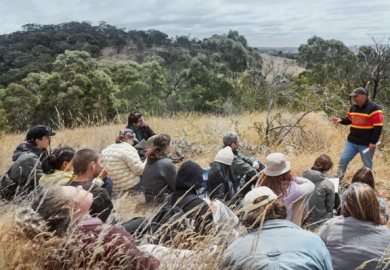You might assume that there were no black people in Tudor England, and that if there were, they were there as slaves. Black Tudors tells another story. The book describes the lives of 10 very different black people living in early modern England, and in the process challenges easy assumptions about race, religion and social status.
Several of these individuals followed a profession. John Blanke was a trumpeter at the court of Henry VIII who appears in the manuscript illustration of the great joust of 1511. Jacques Francis was a diver, hired to salvage valuables from the wreck of the Mary Rose in 1545. Reasonable Blackman was a silk weaver in Elizabethan Southwark who lost two of his children to the plague of 1592. John Anthony was a mariner, described as “of the town and port of Dover”, working in the early Stuart period. Others were servants, such as Edward Swarthye, the porter for a Gloucestershire landowner, or Mary Fillis, who came from Morocco to London as a child, and was baptised in 1597. Diego was a former slave who escaped to become a valuable companion to Francis Drake, while Dederi Jaquoah was an African prince who came to England in a merchant ship, spent two years in London, then returned home – where his fluent English was to come in useful in subsequent trading encounters. Anne Cobbie was a prostitute in London in the 1620s known for her soft skin and Cattelena of Almondsbury seems to have lived as a single independent woman in a small village in Gloucestershire.
These people, although to differing degrees, all had standing in Tudor society; there are records of wages paid to them, of their participation in religious ceremonies and legal processes. What the records do not show is the kind of racial prejudice against them that we might expect. Although they were only 10 individuals among many more black people in Tudor and Stuart England, their rich and varied experiences provide a fascinating example of early modern social diversity. Tudor society made distinctions on the basis of social status or religion; it could be judgemental about foreigners of any kind, but there is little sense here that these people were judged on grounds of race. The resonance of this work for modern debates is clear, and although the argument is in places a little heavy-handed, it is good to be reminded that the British Isles “have always been peopled with immigrants”.
The evidence that Kaufmann has to work with is often sketchy, so a fair amount of her narrative is hypothetical, but she makes her case carefully, while gaps in the narrative are filled by a series of engaging digressions into everything from trumpet-playing to silk-weaving, and from mariners’ clothing to prostitution. With such fragmentary evidence it is necessary to tread cautiously and the question of “whether the development of racial slavery in the English colonies was inevitable” must be speculative. Yet this remains a thought-provoking account of 10 remarkable people, and a valuable corrective to some unthinking assumptions about both Tudor society and the role of racial minorities in English history.
Lucy Wooding is fellow and tutor in history at Lincoln College, University of Oxford.
Black Tudors: The Untold Story
By Miranda Kaufmann
Oneworld, 384pp, £18.99
ISBN 9781786071842
Published 5 October 2017
POSTSCRIPT:
Print headline: English Africans of an earlier era
Register to continue
Why register?
- Registration is free and only takes a moment
- Once registered, you can read 3 articles a month
- Sign up for our newsletter
Subscribe
Or subscribe for unlimited access to:
- Unlimited access to news, views, insights & reviews
- Digital editions
- Digital access to THE’s university and college rankings analysis
Already registered or a current subscriber?




